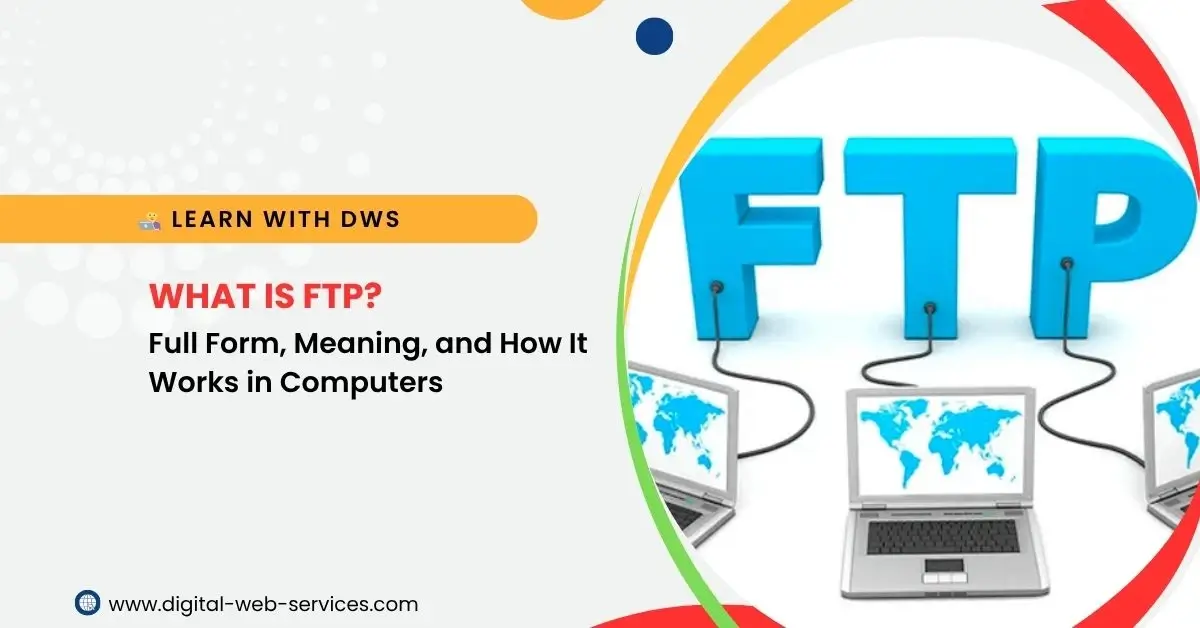
In the world of computers and networking, FTP is a term you might encounter often. But do you know what FTP full form is and how it works? This article will explain FTP meaning, its function, and how it’s used in computer networks. We will also explore FTP vs SFTP and the benefits of using FTP.
FTP Full Form: File Transfer Protocol
The FTP full form in computer science is File Transfer Protocol. It is a protocol used to transfer files between computers over a network, such as the internet or a local network. FTP was developed in the early days of the internet to allow users to upload and download files from remote servers.
What Does FTP Stand For?
FTP stands for File Transfer Protocol. It is a standard network protocol used to transfer files from one host to another over a TCP-based network, such as the internet. FTP protocol is one of the oldest and most widely used protocols in computer networking.
How Does FTP Work?
FTP works by using a client-server model. The FTP client is the software used by the user to interact with the FTP server, where files are stored. When a user wants to download a file, they connect to the FTP server, request the file, and the server sends the file to the client. Similarly, users can upload files to the server.
There are two channels in FTP:
- Command channel: This is used for communication and sending commands between the client and server.
- Data channel: This is where the actual file transfer happens.
What is FTP Used For?
FTP is primarily used for sharing large files, managing websites, and transferring data between computers. It is especially useful in transferring files that are too large for email or when you need to upload files to a web server for hosting.
FTP vs SFTP
FTP is often compared to SFTP (Secure File Transfer Protocol). While both protocols are used for transferring files, SFTP offers an encrypted channel, making it more secure than FTP. On the other hand, FTP transmits data in plain text, which can be intercepted during the transfer. FTP vs SFTP largely boils down to security, with SFTP providing more protection against data theft or tampering.
FTP in Networking
In networking, FTP plays a crucial role in data management. It allows businesses, web developers, and IT professionals to manage files on remote servers and facilitate secure file sharing. FTP is essential in maintaining websites, transferring large datasets, and enabling data access from remote locations.
Benefits of FTP in Computing
- Simple to use: FTP clients and FTP servers are widely available, and most are user-friendly.
- Efficient file transfers: FTP is designed for quick file uploads and downloads, making it ideal for large files.
- Compatibility: FTP works across many operating systems, ensuring that it can be used in a variety of computing environments.
- Versatility: It supports a wide range of file types, including images, videos, documents, and more.
FAQs about FTP
Q: What is FTP used for?
A: FTP is used for transferring files between computers over a network. It is commonly used for uploading files to web servers, downloading files from remote servers, and sharing large files.
Q: How does FTP work?
A: FTP works by using a client-server model. The client sends commands to the server to either upload or download files. Data is transferred through two channels: a command channel and a data channel.
Q: What is the difference between FTP and SFTP?
A: FTP and SFTP are both used for file transfer, but SFTP is a secure version of FTP. SFTP encrypts data, whereas FTP sends data in plaintext, which can be intercepted.
Q: Is FTP still used today?
A: Yes, FTP is still widely used for managing files, especially for website maintenance and large file transfers. However, many users are now opting for more secure alternatives like SFTP.
Q: What does FTP stand for?
A: FTP stands for File Transfer Protocol, a standard protocol used for transferring files between computers over a network.
Conclusion
To sum up, FTP (File Transfer Protocol) is an essential tool in computer networks for transferring files. Whether you’re uploading files to a website, sharing large documents, or managing files on a remote server, FTP is a go-to protocol. However, for enhanced security, you may want to consider using SFTP, especially when handling sensitive data.
Understanding FTP meaning, FTP full form, and how it works can help you make better decisions when transferring files or managing a website. So, next time you hear about FTP, you’ll know exactly what it is and how it helps in networking and computing.
Digital Web Services (DWS) is a leading IT company specializing in Software Development, Web Application Development, Website Designing, and Digital Marketing. Here are providing all kinds of services and solutions for the digital transformation of any business and website.









